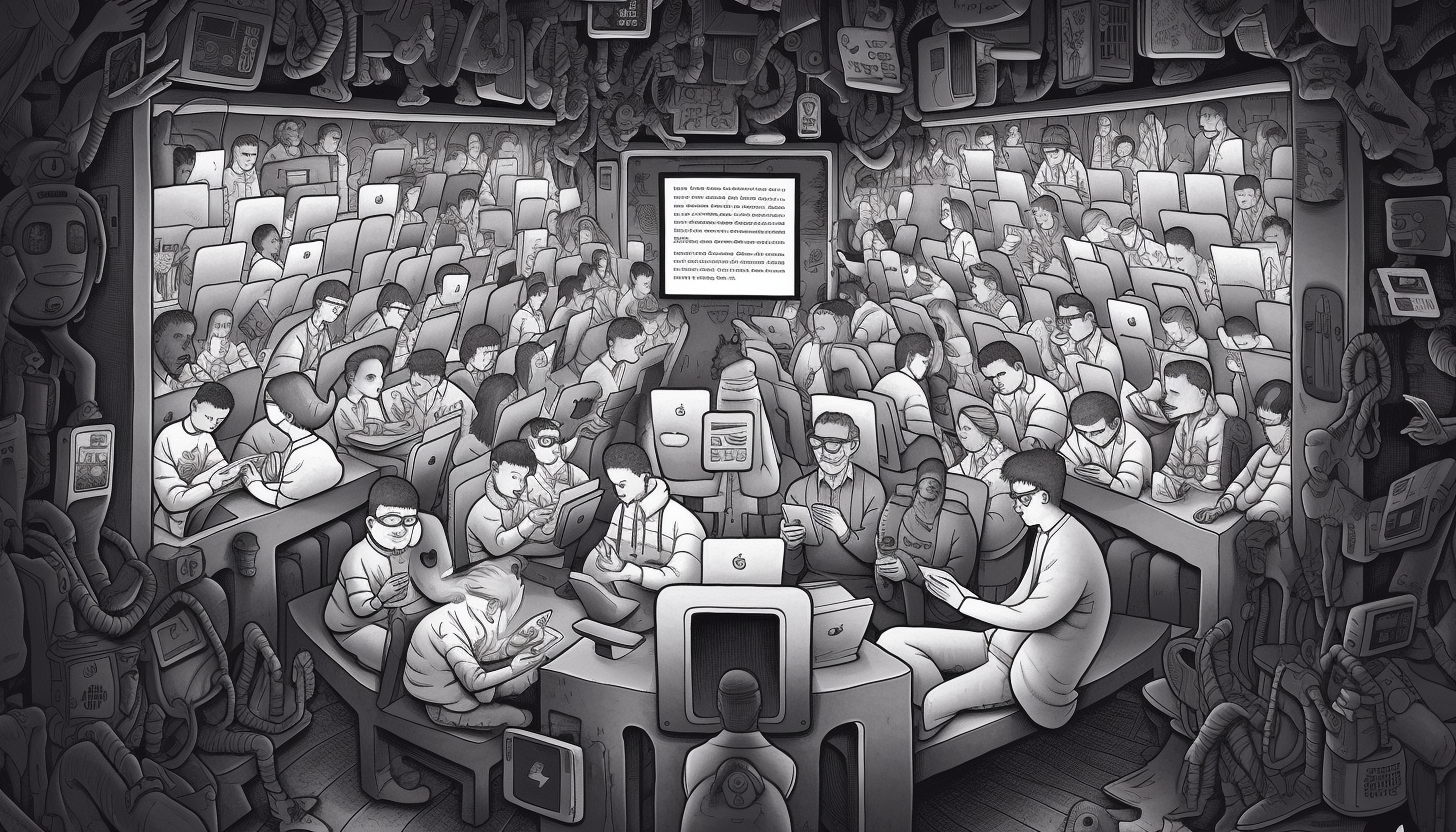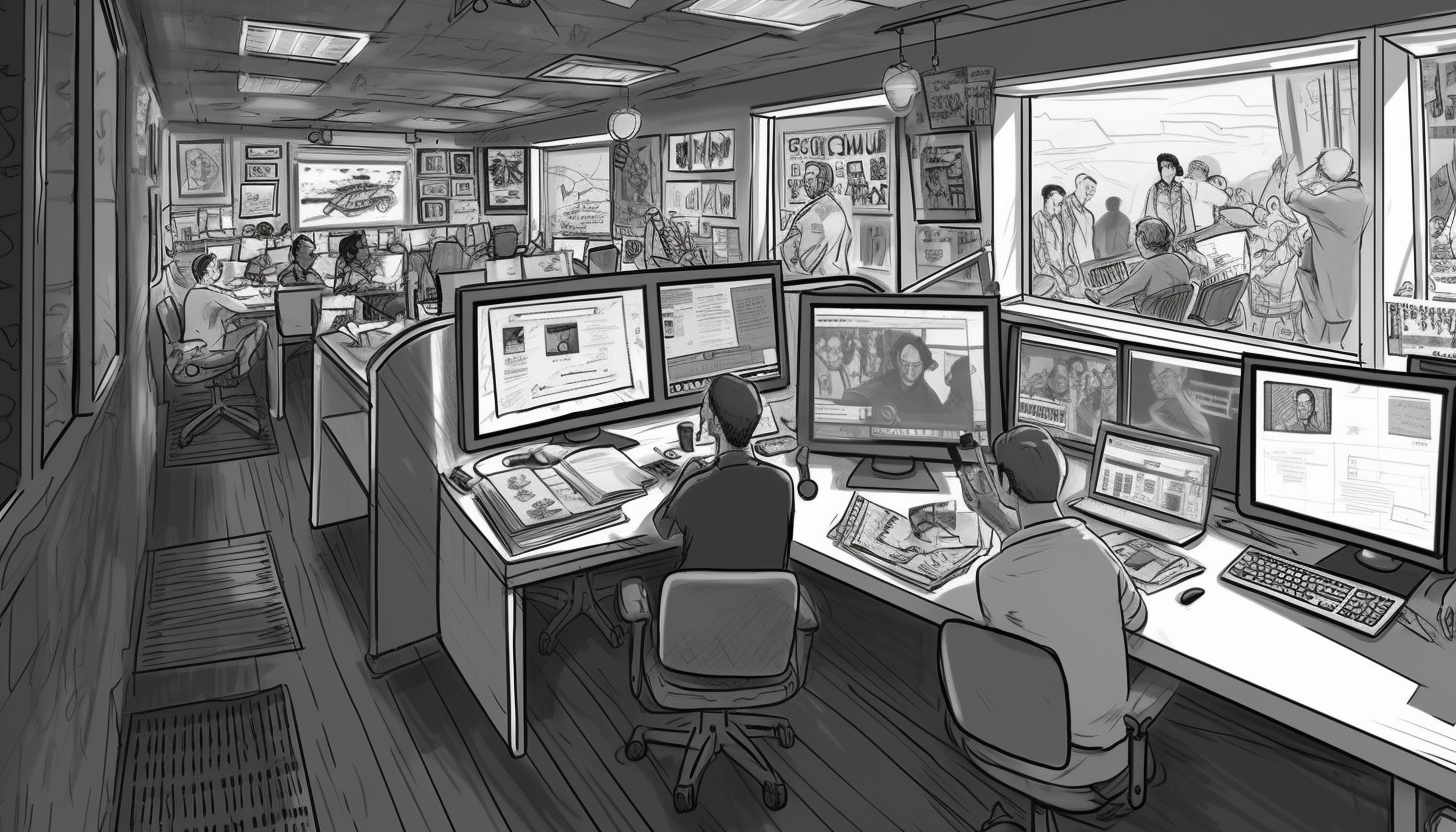The Significance of User Research in Enterprise SaaS Product Design: Unveiling User-Centric Insights
User research is a critical component in designing enterprise SaaS products, providing valuable insights into the unique needs and challenges of enterprise users.

Over recent weeks, I have had the privilege of collaborating with a brilliant Associate Professor from the University of Illinois at Urbana-Champaign. Together, we have embarked on an immersive journey to develop UX studies for various projects within our organization. This collaboration has prompted me to revisit and reacquaint myself with my old UX research notes, shedding light on numerous methodologies and approaches for uncovering the answers we, as product designers, seek. In this exploration, I am reminded of this research's profound significance and distinctiveness, particularly when applying User-Centered Design (UCD) principles to Software-as-a-Service (SaaS) products. Embark on this journey with me as we delve into the fundamentals and bring ourselves up to speed in this captivating realm.
This academic exploration delves into the intrinsic importance of user research in enterprise SaaS product design, shedding light on critical methodologies and approaches that facilitate the acquisition of insightful research data.
Understanding the Nuanced Needs of Enterprise Users:
Enterprise customers present distinct requirements that diverge from those of individual users or small businesses. Their operations often encompass complex workflows, voluminous data management, stringent security considerations, and diverse user roles. User research, as an essential facet, empowers product designers to uncover these nuanced needs and challenges, furnishing invaluable insights that intricately shape the design process.
By conducting user research, designers can gain a comprehensive understanding of the complex workflows that enterprise users navigate daily. This includes identifying pain points, bottlenecks, and inefficiencies within these workflows, which may arise from the sheer volume and complexity of data. Through user research, designers can uncover the specific challenges that enterprise users face when managing, analyzing, and utilizing large amounts of data effectively.
Security is another crucial aspect that distinguishes enterprise users. Organizations prioritize protecting their sensitive data, which has implications for the design of SaaS products. User research allows designers to delve into the intricate security considerations that enterprise users must navigate, ensuring that the product design aligns with robust security protocols and meets the stringent requirements of the enterprise environment.
Enterprise user research aims to understand employees' and other stakeholders' needs, behaviors, and experiences within a corporate environment. This research type is pivotal for designing and developing practical internal tools, systems, and processes that enhance productivity, satisfaction, and overall user experience. A range of methodologies can be employed in enterprise user research, each with strengths and weaknesses. Here are a few notable ones:
Interviews

Interviews are a qualitative research method that involves direct, one-on-one conversations between the researcher and the participant. The purpose of these discussions is to gather in-depth insights into a user's experiences, opinions, motivations, and behaviors. Interviews are a highly flexible research method and can be adapted to a wide range of contexts and research questions.
There are three main types of interviews:
- Structured Interviews: In structured interviews, the researcher uses a predefined list of questions that are asked in the same order to all participants. This approach is similar to a survey but allows the researcher to ask follow-up questions and clarify any misunderstandings in real-time. It's useful when you need to collect comparable data across participants.
- Semi-Structured Interviews: Semi-structured interviews also involve a list of questions or topics, but the researcher has more freedom to deviate from the list, ask follow-up questions, and let the conversation flow naturally. This approach provides a balance between consistency across participants and the flexibility to explore interesting topics that arise during the interview.
- Unstructured Interviews: There needs to be a set list of questions in unstructured interviews. Instead, the conversation is guided by the participant's responses and the researcher's interests. This approach is most useful when exploring a new topic or wanting to understand a participant's experiences and perspectives in depth.
When conducting interviews, it's essential to create a comfortable environment where participants feel safe to share their thoughts and experiences. Interviewers should be trained to listen actively, ask open-ended questions, and avoid leading the participant.
The data collected from interviews is typically qualitative and rich in detail. It can be analyzed in various ways, such as through thematic analysis, where the researcher identifies common themes across interviews, or narrative analysis, where the researcher looks at the participant's story as a whole.
In enterprise user research, interviews can be used to understand users' experiences with a tool or system, their workflows and challenges, their needs and goals, and their work context. This can inform the design of devices and methods better suited to the users' needs and workflows.
Surveys

Surveys are a quantitative research method designed to gather standardized data from many people. Questions are designed to collect specific information about the participants' behaviors, attitudes, and perceptions.
Here are the primary types of survey questions:
- Closed-ended questions: These questions provide participants with predefined responses. This could be a simple yes/no question, a multiple-choice question, or a Likert scale question where participants rate their agreement with a statement on a scale (e.g., 1-5 or 1-7). Closed-ended questions are easy to analyze quantitatively.
- Open-ended questions allow participants to respond in their own words. While they can provide rich, qualitative data, they are more time-consuming to analyze than closed-ended questions.
Surveys can be conducted in various formats, including online, over the phone, or in person. Online surveys have become particularly popular due to their convenience and the ability to reach many participants quickly.
Here are some critical advantages of surveys in enterprise user research:
- Scalability: Surveys allow researchers to collect data from many participants relatively cheaply, making them a good choice when you need to generalize findings to a larger population.
- Quantifiability: Surveys provide quantitative data that can be used to make comparisons, identify trends, and perform statistical analyses.
- Anonymity: Because surveys can be anonymous, participants may be likelier to share honest feedback, especially about sensitive or controversial topics.
However, surveys also have limitations:
- Limited depth: Surveys may not capture the full complexity of participants' experiences and perspectives. They are less suitable for exploring why people behave or think the way they do.
- Response bias: How questions are phrased can influence how participants respond. Additionally, those who respond to a survey may not represent the entire population (this is known as self-selection bias).
- Misinterpretation: Participants may misunderstand or misinterpret questions, leading to incorrect responses.
In the context of enterprise user research, surveys can collect feedback on a tool or system, understand users' needs and challenges, measure user satisfaction, and track changes over time. They are often combined with other methods, such as interviews or usability testing, to provide a more complete picture of the user experience.
Usability Testing

Usability Testing involves observing users interact with a product or system to identify usability problems, collect qualitative and quantitative data, and understand the user's satisfaction with the product. The goal of usability testing is to inform the design and development process and make the product more efficient, effective, and satisfying for the users.
Usability testing can be conducted in various ways, depending on the specifics of the research question and the resources available:
- Moderated Usability Testing: In moderated testing, a researcher is present (either in-person or remotely) to guide the participant through the session, ask questions, and probe deeper into the participant's thoughts and actions. This allows the researcher to gather rich qualitative data and understand the participant's thought processes.
- Unmoderated Usability Testing: In unmoderated testing, participants complete the test independently, often using an online platform that records their actions and responses. This method can reach a more significant number of participants and is more flexible for the participants. Still, it doesn't allow the researcher to ask follow-up questions or clarify instructions.
- Remote Usability Testing: This can be either moderated or unmoderated and allows participants to take part in the test from their environment, which can provide more natural and realistic results.
- Lab Usability Testing: This is typically moderated in a controlled environment, allowing for high-quality recording equipment and the ability to control other variables.
Usability tests typically involve a set of tasks that represent what users would normally do with the product. The participant's performance on these tasks is then evaluated based on metrics like:
- Success rate: The percentage of tasks that are completed successfully.
- Error rate: The number and severity of errors made during task completion.
- Task completion: Whether or not the user was able to complete the task.
- Time-on-task: How long it takes for a user to complete a task.
- Learnability: How quickly a user can learn to use the system effectively.
- Satisfaction: How satisfied users are with using the system.
These metrics, along with the qualitative insights gathered during the test, can provide valuable insights into the usability of a product and highlight areas where improvements are needed.
In the context of enterprise user research, usability testing can be used to evaluate internal tools, software, and processes. This can lead to improvements that increase productivity, reduce errors, and enhance employee satisfaction.
Focus Groups

Focus groups are a form of qualitative research where a group of people is asked about their perceptions, opinions, beliefs, and attitudes toward a product, service, concept, advertisement, idea, or packaging. They are typically led by a facilitator who guides the discussion and ensures that every participant has an opportunity to speak.
Here are the main components of focus groups:
- Participants: A focus group typically includes 6-10 participants. The participants should share specific characteristics related to the research topic (e.g., they might all be users of particular software in an enterprise context).
- Facilitator: The facilitator guides the discussion, asks questions, encourages participation from all group members, and ensures that the conversation stays on topic.
- Discussion Guide: The facilitator uses a discussion guide, which lists questions or topics to be covered during the focus group. The guide is flexible and can be adjusted based on the flow of the conversation.
In enterprise user research, focus groups can be used for a variety of purposes, including:
- Exploring attitudes and perceptions: Focus groups can help researchers understand how employees perceive a tool, system, or process and why they hold these views.
- Generating ideas: If you're in the early stages of developing a new tool or system, focus groups can be a great way to generate ideas and understand users' needs and desires.
- Identifying problems: Discussing their experiences collectively, focus group participants can help identify common issues or challenges with a tool or system.
Here are some strengths and weaknesses of focus groups:
Strengths:
- Rich data: Focus groups can provide rich, qualitative data. The group setting can encourage participants to explore and clarify their views, leading to deeper insights.
- Social dynamics: Focus groups allow researchers to observe social dynamics and understand how opinions are formed and influenced within a group.
Weaknesses:
- Groupthink: The group setting can sometimes lead to groupthink, where participants conform to the majority view rather than express their opinions.
- Dominant voices: Some participants may dominate the discussion, while others may hold back. A skilled facilitator can mitigate this risk by ensuring that everyone has a chance to speak.
- Not representative: The views expressed in a focus group may not represent the larger population. This can be mitigated by conducting multiple focus groups with different types of participants.
Ethnography

Ethnography is a research method rooted in anthropology that involves immersing oneself in a community or culture to gain an in-depth understanding of their practices, rituals, and perspectives. In enterprise user research, ethnography involves observing and studying employees in their natural work environment over an extended period.
Ethnographic research aims to gain a deep, holistic understanding of the user's world - their behaviors, needs, goals, tools, challenges, and the social and cultural context in which they work. This can reveal rich insights that inform the design and development of devices, systems, and processes.
Here are some key aspects of ethnographic research in an enterprise context:
- Observation: The researcher spends time in the user's environment, observing their behaviors and interactions. This might involve shadowing a user during their workday, sitting in on meetings, or watching how a team collaborates on a project.
- Contextual Inquiry: This technique is often used in ethnographic research where the researcher converses with users while performing tasks. The goal is to understand the context of their actions, their thought process, and the challenges they encounter.
- Cultural immersion: The researcher tries to immerse themselves in the user's culture as much as possible. This might involve understanding the corporate culture, the jargon used in the workplace, the power dynamics among employees, and the norms and rituals of the organization.
- Field notes: The researcher records detailed notes about their observations, conversations, and experiences. These field notes form the primary data for ethnographic research.
- Analysis: Ethnographic data is analyzed qualitatively. The researcher looks for patterns, themes, and insights that can inform design decisions. This might involve coding the data, creating user personas, or developing journey maps.
Ethnography has several strengths and weaknesses:
Strengths:
- Depth of insight: Ethnography can reveal deep insights about user behavior and the context in which it occurs. It can uncover needs and challenges that users might not be consciously aware of or able to articulate in an interview or survey.
- Real-world context: By observing users in their natural environment, ethnography captures the complexity and messiness of the natural world, which can be missed in more controlled research methods like lab studies.
Weaknesses:
- Time-consuming: Ethnography involves spending extended periods in the field, which can be time-consuming and costly. It may not be feasible for every project.
- Interpretation: Ethnographic data is complex and can be open to interpretation. Different researchers might draw different conclusions from the same data.
Card Sorting

Card sorting is a user research method to understand how users categorize and structure information. It's beneficial for designing or evaluating a system's information architecture, such as a website's menu structure or the organization of functions in a software application.
Here are the critical steps in a card-sorting session:
- Prepare the cards: Each card represents a piece of content or functionality in the system. For example, if you're designing a website for a university, cards might represent pages like "Undergraduate Programs," "Admissions," "Faculty Directory," and so on.
- Ask participants to sort the cards: Participants are asked to sort them into groups that make sense to them. They can create as many or as few groups as they like.
- Ask participants to label the groups: After sorting the cards, participants are asked to create a label for each group that describes what the cards in that group have in common.
There are two main types of card sorting:
- Open card sorting: Participants create their groups and labels. This is useful for exploring how users understand and categorize the content, and it can reveal new categories that the researcher hadn't considered.
- Closed card sorting: The researcher provides predefined categories; participants must sort the cards into these categories. This is useful for testing whether users understand and agree with an existing or proposed categorization scheme.
The researcher analyzes the results after the card-sorting session to identify common patterns. This might involve calculating the percentage of participants who grouped certain cards, creating a dendrogram to visualize the relationships between cards, or identifying common themes in the category labels participants made.
Here are some strengths and weaknesses of card sorting:
Strengths:
- User-centered: Card sorting involves users directly in the design process, ensuring that the resulting information architecture aligns with users' mental models.
- Simplicity: Card sorting is easy to understand and participate in, making it accessible to many users.
Weaknesses:
- Limited context: In a card sorting session, users categorize cards in isolation, without the context of using the actual system. Card sorting results should be validated with other methods, such as usability testing.
- Doesn't capture task flows: Card sorting shows how users categorize information but don't show how they would navigate through the system to complete tasks. Again, this highlights the need for complementary methods like user journey mapping or task analysis.
The Tangible Impact of User Research:
Meticulous user research empowers designers to conceptualize and implement enterprise SaaS products with intuitiveness, efficiency, and tailored functionality. Informed design decision-making, guided by empirical data and user insights, mitigates risks and leads to more effective and successful outcomes. Addressing user pain points and streamlining complex workflows elevate the user experience, resulting in heightened productivity and increased user satisfaction. Organizations that invest in user research gain a competitive advantage by creating products that authentically meet the needs of enterprise customers, positioning themselves as valuable and indispensable solutions within the market.
User research stands as a cornerstone for success in enterprise SaaS product design. Designers unlock transformative insights that inform their design decisions by delving into enterprise users' complex needs, pain points, and workflows. Methodologies such as stakeholder interviews, on-site observations, usability testing, surveys, and remote research offer pathways to gather empirical data and cultivate a deep understanding of user preferences and challenges. User research empowers designers to craft intuitive and efficient solutions that align with the unique requirements of enterprise customers. The informed design decisions from user research elevate the user experience, drive productivity, and position organizations for a competitive advantage in the ever-evolving landscape of enterprise SaaS products. Organizations can forge a path toward user-centricity and innovation by embracing the power of user research, ultimately shaping the future of enterprise SaaS product design. Through continuous user research endeavors, designers can continuously refine their understanding of enterprise users, adapt to evolving needs, and create exceptional experiences that drive user satisfaction and propel organizational success.
